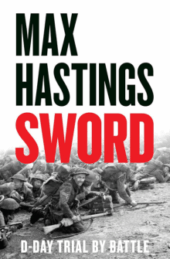In the 1950s and 60s, Word War Two was a recent memory for most families who had nearly all been involved in the struggle one way or another. At that time, escape stories and the daring exploits of servicemen who had been captured regularly appeared on shop bookshelves. Films were released like The Wooden Horse, The Colditz Story, and, of course, The Great Escape. I doubt the readers of the time had any idea that an organisation had been created in the shadows that would assist and control the various networks used by escapers and the training programmes that were put into action in the earliest of the War. That organisation was MI9.
Helen Fry’s scrupulously researched book, making use of newly released archives, provides the story of the people and networks that worked behind the scenes in the Second World War. She has brought together a wide array of accounts of individual escapers, but more importantly, the history of the many brave families and individuals who made allied escapes and evasions from the Nazis a reality. It is invigorating to hear that MI9’s first leader was an army officer chosen for his “drive, initiative and being no respecter of red tape”. This was British intelligence gathering and innovation at its absolute best. The author describes the establishment and organisation of two of the main escape lines in detail: the Pat line and the Comet Line.
It is a real story of resourcefulness and imagination against terrible odds. In all of Helen Fry’s estimates, the total number of British and Commonwealth servicemen who escaped from prison camps or the battle zone and reached England was 26,190, almost the same number as in two Army Divisions. Such was the value of this department that we learn that within two weeks of entering the war in 1941, the Americans sent a mission to London to set up an agency on similar lines.
There are terrible tales of betrayal, as well as the valour of French, Italian, Belgian and Dutch families and individuals who made the escape lines work. Many of the brave people who helped in these lines and sheltered fleeing airmen and soldiers paid with their lives or were brutally tortured but survived in concentration camps until the end of the War. Amongst the many heroes was a 25-year-old Belgian woman named Andree de Jongh, who trekked hundreds of miles across occupied France to bring escapers to the Pyrenees where they crossed into Spain. Known as Dedee, she became one of the founders and inspiration of the Comet escape line. By 1943, she was betrayed but survived concentration camps to see the War end in the allied victory. Nevertheless, the Comet line lived on.
Many will have seen the famous film Cockleshell Heroes about a brave commando raid on enemy shipping in Bordeaux. The film does not describe the daring escape of the two survivors who were helped through France, first towards Switzerland but finally to liberty in Spain – this escapade itself is worthy of a film.
MI9 is a unique and original history of the establishment of a completely new intelligence network that not only organised escape and evasion of captured prisoners, downed airmen and left behind soldiers, but it also conducted interrogations and debriefs that added additional intelligence, which assisted in the wider picture that was painstakingly built of occupied Europe. Once started, this is an impossible book to put down.






